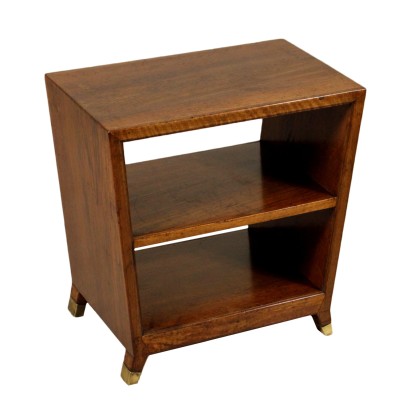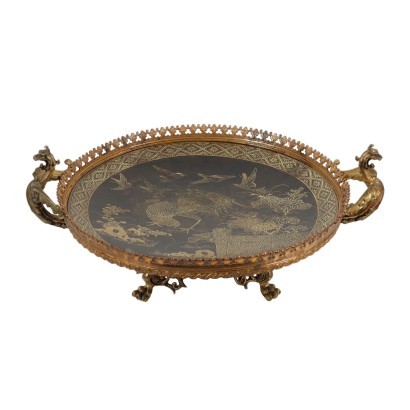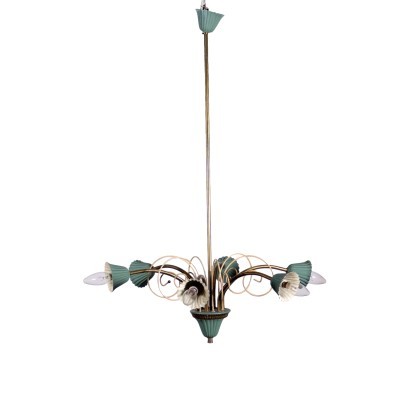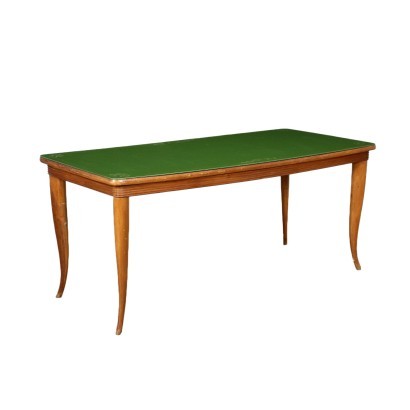Cabinet Attributable to Gio Ponti Walnut Vintage Italy 1950s - Years 50
Features
Years 50
Designer: Attributable to Gio Ponti
Production: Italiana
Time: 1950s
Production country: Italy
Main essence: Walnut
Material: Walnut Veneer , Brass
Description
A cabinet, small bookcase designed by Gio Ponti (1891-1979) for the Banca Nazionale del Lavoro in Genoa. Walnut veneer, brass ferrules. Manufactured in Italy, 1950s.
Product Condition:
Good condition. Wear consistent with age and use. Any damage or loss is displayed as completely as possible in the pictures.
Dimensions (cm):
Height: 50
Width: 49
Depth: 30
Additional Information
Designer: Gio Ponti
Gio (Giovanni) Ponti was born in Milan in 1891, and graduated in architecture from the Milan Polytechnic in 1921. In 1923 he participated in the 1st Biennial of Decorative Arts held at the ISIA in Monza and was subsequently involved in the organization of the various Triennials, both in Monza and in Milan. In the 1920s, Richard Ginori began his activity as a designer in the ceramic industry, and overall re-elaborated the industrial design strategy of the company; with ceramics he won the "Gran Prix" in 1925. In recent years his production is more based on classical themes and is close to the twentieth century movement. In the same years he also began his publishing activity: in 1928 he founded the magazine Domus. It will represent the center of the cultural debate of Italian architecture and design of the second half of the twentieth century. Ponti's activity extended in the 1930s: he organized the V Triennale di Milano in 1933, designed the sets and costumes for the Teatro alla Scala, and participated in the ADI Industrial Design Association, being one of the supporters of the award " Compasso d'oro "promoted by the La Rinascente warehouses. Among other things, he receives numerous national and international awards. In 1951, both Ponti's design and architecture became more innovative, abandoning the frequent links to the neoclassical past. It is here that the period of most intense and fruitful activity both in architecture and design begins, in fact, in the fifties, some of his most important works will be realized.Find out more about Gio Ponti with our insights:
Ninfea chair by Gio Ponti
Ponti's first masterpiece: the 646 Light
FineArt: Two Gio Ponti collectible 'Ninfea' chairs < br/> FineArt: Two 'Ninfea' chairs, Gio Ponti
Production: Italiana
Time: 1950s
1950sMain essence: Walnut
Walnut wood comes from the plant whose botanical name is juglans regia , probably originally from the East but very common in Europe. Light or dark brown in color, it is a hard wood with a beautiful grain, widely used in antique furniture. It was the main essence in Italy throughout the Renaissance and later had a good diffusion in Europe, especially in England, until the advent of mahogany. It was used for solid wood furniture and sometimes carvings and inlays, its only big limitation is that it suffers a lot from woodworm. In France it was widely used more than anything else in the provinces. In the second half of the eighteenth century its use decreased significantly because mahogany and other exotic woods were preferred.Material:
Walnut Veneer
Brass
Alternative proposals
It could also interest you


























